Filmmaking 101
Article by Colette Nichol, Story Strategist and Solo Filmmaker
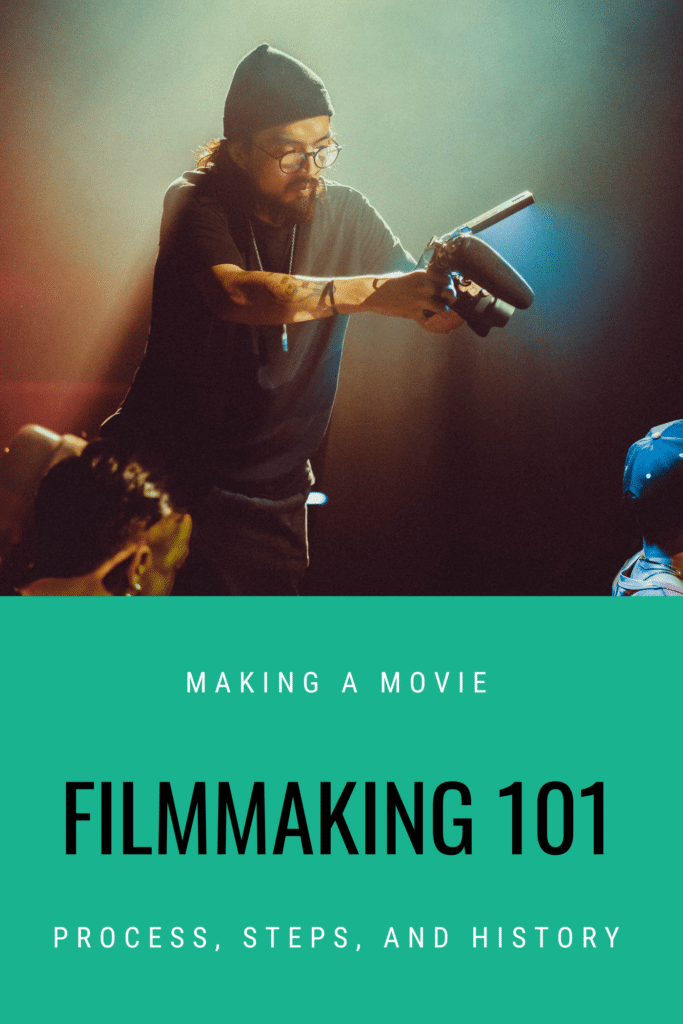
Ah, filmmaking!
The glamour and romance of telling stories for the big and small screen have sucked in (and spat out) many aspiring filmmakers, directors, and movie stars.
Since The Story of the Kelly Gang, the world’s first-ever feature film, hit movie theatres on Boxing Day in 1906, movie-making has captured the imaginations of artists and audiences around the world. (+)
Topics In this Filmmaking Post:
- Filmmaking: The Beginnings
- What Is Filmmaking?
- Steps in the Filmmaking Process
- Development Steps
- Pre-Production Steps
- Production Steps
- Calling the Roll
- Post-production Steps
- Production Team: The People Who Make the Movies
- Filmmaking Software and Production Software
- Top Questions about Filmmaking
Filmmaking: The Beginnings
August 24, 1981.
It’s a sticky hot summer’s day in New Jersey when Thomas Edison files a patent for two new-fangled devices: the kinetograph and the kinetoscope.
In Greek, kineto means movement and scopos means to watch.
And so began a human obsession with watching movement inside a box. As much as filmmaking technology has advanced in the past 140+ years, we’re still just watching motion inside a box.

The kinetoscope was used to watch the “movies,” while the kinetograph was the camera.
The kinetograph used 35mm film, which remains the standard for analogue filmmaking to this day. However, while groundbreaking at the time, the kinetograph was not a true “filmmaking camera” by modern standards. It was designed so that you could watch mini movies by pressing your eye against a box creating a peep-show-style experience.
Quite the opposite of a big-screen experience.
The first camera used to shoot a film intended for projection was called the Cinématographe. This film camera was created by the aptly named Lumière Brothers in France. The ambitious sibling inventors held their first private screening of projected motion pictures in 1895. (+)

What Is Filmmaking?
Filmmaking is the process of telling stories with moving images for the big or small screen.
Filmmaking can be broken into five main stages: development, pre-production, production, post-production, and distribution. Whether creating an indie drama with your iPhone or making a blockbuster action film, you’ll need to complete all five stages of the filmmaking process to make a movie.
🌟Related Post: Top Filmmaking Basics Every Beginner Needs to Know
Steps in the Filmmaking Process
Development stage
In the development stage of moviemaking, the producer works with a screenwriter or team of writers to develop a story and script worthy of the big or small screen.
After a project is greenlit, the producer puts together the team that will ultimately bring the story to life. This is the stage when movie stars get “attached” to a film and then drop out and get attached again.
It’s the free-wheeling chaotic creative stage where the ground is being set for pre-production, but the studio or production company has yet to sink millions into the project.
Once all the key production team members have been hired and the script is near completion, the project moves into the pre-production stage.
Pre-Production stage
Pre-production is the stage where you nail down every piece of the filmmaking puzzle that will allow your shoot to run smoothly.
You need to put together the rest of your filmmaking team, make sure the script is ready, and cast your film. At this stage, you also need to break down your script so you know what shot’s you’ll need to get for the edit to work as well as the technical requirements.
The pre-production stage is what makes or breaks your shoot.
It’s entirely unsexy but also critical. Whether or not you do a fancy storyboard is irrelevant. Pre-production isn’t about making cute pieces of paperwork. It’s about thinking through every single aspect of your movie, making sure you’ve got a plan in place and the right people to execute the plan.
If you’re a solo filmmaker, your pre-production won’t be as complicated.
But it’s still the most critical part of the filmmaking process. Sloppy pre-production will result in a sloppy final product.

Production stage
Production is the part of filmmaking that everyone loves.
You’re on set, shooting the damn thing, and there’s a buzz and energy that allows people to work 15-hour days without complaining. Production is also the shortest part of the process.
During the production stage, you’ll execute the plan you created in pre-production. There may be script rewrites going on while you’re in this stage. But you should be working off a relatively “final” script.
Hopefully, you’re not on a sinking ship, and all the key production members stay the same during this stage.
The heroes of the production stage are the AD (assistant director), who essentially runs the set, as well as the Director, Cinematographer, Sound Recordist, Grips, Gaffers, and Electrical. That said, without every other production member doing their job, this stage doesn’t work.
Some unsung heroes of the production stage are wardrobe, hair, and makeup.
If you’ve every had to deal with shiny skin and messed up hair in the edit, you know that your hair and makeup people are life savers.
As a solo filmmaker, matte powder and hairspray become your friend — unless you’re making something that’s supposed to be ultra-realistic and doesn’t require matte skin or organized hair.
Post-production stage
Post-production is the long, drawn-out phase of filmmaking where you cut your footage into some semblance of a story.
First, you create your rough cut, turn that mess into a fine cut, and then work on the final cut.
While editing your film, you may create a rough version of your sound design, but upon final cut, your editor will usually hand the film off to the sound designer, who will make everything 1000x better.
When you’re working with a budget, this stage of the filmmaking process has a lot of people working in specialized areas.
You have a dialogue editor who cleans up the unsavoury noises that come out of actors’ mouths (lip smacks, saliva, and sighs).
There will be a sound designer and a composer.
Once your sound is finalized, it will be mastered so that every channel of audio is perfectly designed to work in the context of either a big theatre or a streaming platform.
You’ll also be sending your film off to a colourist who will colour-correct and then grade the film so that the look is tuned in and amplified.
You may also have a visual effects team who will be doing all manner of funky things to your shots to create the illusion of explosions, aliens, gunfire, and whatever other madness was put in the script.
Movie making is an art and a business. It’s that tension between art and commerce that makes the industry so fascinating. In some countries, movies aren’t required to make money. There is so much government funding, that their film industry is more about art and less about commerce. These films usually stay within their country of origin and are seen be relatively small audiences.
In the US and India, filmmaking is a BIG business.
In 2020, the US film industry generated over $30 billion in revenue. (+) China’s film industry generated $3.1 billion in 2020. While in India, the most up-to-date stats say the industry generated $2.56 billion dollars in 2022.
As an indie filmmaker or solo filmmaker, you don’t usually have the luxury of millions of government dollars propping up your production.
Nor are you trying to make a box office hit.
So you do need to think about your budget and whether you’ll be able to either make back your money or can afford to lose it all. There are so many ways that independent media artists, videomakers, indie filmmakers, and solo filmmakers can earn an income from their art these days. But it’s important to think about your marketing and distribution strategy for your movie before you hit record.
Where will you screen your movie?
How will your movie make money?
Who is your audience?
These are the three main questions to ask yourself before getting started.
🌟 Related Post: How to Market a Movie and Build an Audience for Your Films

Marketing and Distribution phase
The marketing and distribution phase actually starts at the very beginning of the filmmaking process.
It’s not the final stage. It’s the first stage. But most indie filmmakers like to pretend that’s not the case because, well, marketing sounds like hell in a bottle for most artists.
But the truth is that if you’re a producer, you’re thinking about the marketing phase well before a project gets greenlit.
You’re asking yourself, “Can I sell this thing? Is there actually an audience? How big is this audience? Will this movie be able to make money?”
Breaking the Process Down, aka. How to Make a Movie
It’s one thing to have a high-level overview of the process.
But to make a movie, you need to break everything down into tiny chunks. The only way you can take a big unwieldy project like making a film and actually turn that into a reality is by cutting the process into little manageable sub-projects.
So let’s go over the steps and sub-projects involved in each of the five project stages.

Film Production – Development Steps
The development stage of making a movie is the first and one of the most critical steps in the filmmaking process. Here’s an overview of the key tasks that are typically involved:
1. Concept Development
This involves brainstorming and developing an idea for a movie.
This can include deciding on the genre, hook, main characters, basic plot, and setting. At this stage, you need to know if there’s an audience for your film or not. You’ll probably write a ton of loglines as you attempt to figure out if your idea will work.
2. Story Development
Once the concept is clear, you’ll develop the story.
This often involves creating a more detailed plot and character arcs. You’ll use filmmaking tools like the story circle, hero’s journey, and five-act or 3-act structure to break your story down.
3. Writing the Treatment
A treatment outlines the story of the film from beginning to end.
It’s usually a few pages long and gives an overview of the film’s plot and characters. It’s not written in screenplay format. It’s written like a summary.
4. Writing the Screenplay
Now, you’ll expand your treatment into a full screenplay, which includes dialogue and action.
This process usually involves many drafts and revisions. You might be working with a single screenwriter or a team. Some directors prefer to write their own screenplays and work with a story consultant to nail everything down.
5. Packaging
Packaging is putting together some of the main creative elements of a movie, such as the main stars, the writer and the director.
A top talent agency may put together a writer, director, and talent from within their agency to build out a movie. Rather than waiting for a movie to get made, they can make more money by packaging a film that’s a vehicle for their stars. Who gets attached during packaging depends on who is doing the packaging. (+)
6. Financing
Once the script and initial package are complete, efforts to secure financing for the project begin.
This can involve pitching to studios, and investors, or applying for grants and tax credits.
7. Legal Work
This includes securing the rights to any source material, like a book or play the script is based.
Ideally, you’d secure rights to the source material well before you start writing the script. This side of the development process also involves creating contracts for all the major players involved in the film. If you’re working with big stars, this might involve negotiating back-end deals where key players get a portion of the gross profit. This can also be done with indie movies, but there’s a lot less money at stake, so the back-end take won’t be that exciting. (+ + )
8. Budgeting
An initial budget is created, taking into account all costs that will be incurred during the production and post-production stages.
This is often adjusted later as more details about the production are finalized. You should also take into account the cost of marketing. If you’re going to try to get your film into festivals, put in those costs as well.
The development phase can last from a few months to several years, depending on the complexity of the project, availability of funds, and other factors. It’s a crucial stage that sets the groundwork for the rest of the filmmaking process.

Film Production – Pre-Production Steps
1. Lock shooting script
Finalize your screenplay with no more major changes.
2. Finalize the budget
Estimate and allocate finances for all aspects of your production.
3. Form a business entity
Set up a company to manage the production’s financial and legal aspects.
4. Hire key production crew
Hire essential production team members such as the director, cinematographer, and production designer.
5. Break down the script
Analyze the script scene by scene to identify required resources like props, costumes, locations, and actors.
6. Storyboard (if relevant to your project)
Create visual representations of the script to guide the shooting of scenes. Not every production does this. But for big-budget and animated films, it’s essential. For commercial shoots, it’s a requirement because you need to get clients to sign off.
7. Scout and secure locations
Find and book the locations where you’ll shoot your film.
8. Cast your movie
Put out a casting call, run auditions and hire actors.
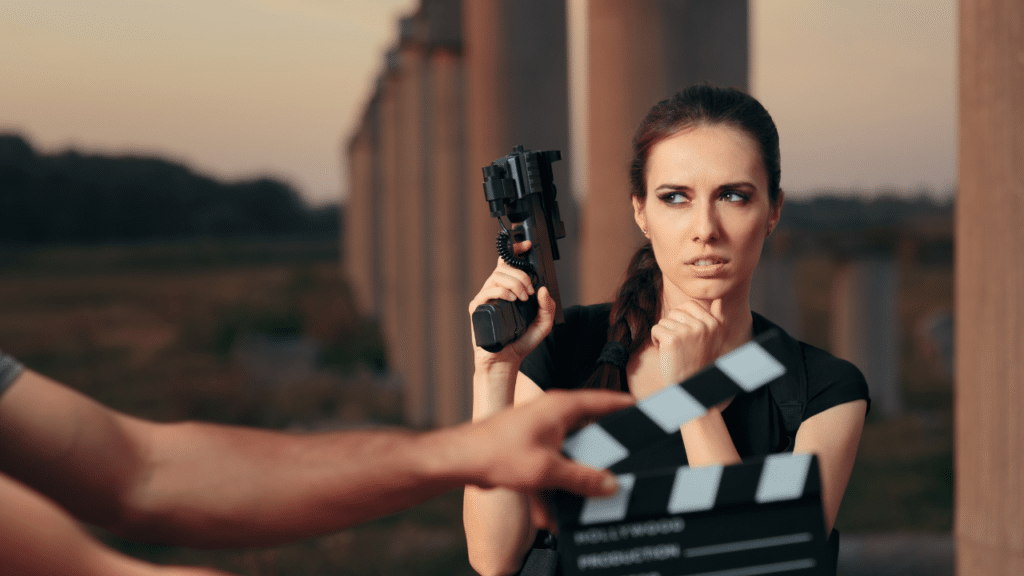
9. Do a table read
Gather your cast to read through the script together.
10. Run rehearsals
Run scenes with the cast to prepare for shooting. You may even begin blocking the scenes at this point.
11. Start up the Art Department
Begin designing and creating sets, props, and any necessary visual elements. For example, if you need a prop gun, you should figure this out well in advance. Fun fact: anything with guns creates a logistical and legal nightmare for indie filmmakers, so do this well in advance.
12. Plan wardrobe, hair, and makeup
Make sure you have your hair and makeup team as well as your wardrobe department. Even if this is one person doing all the things, get this person locked in. They’ll determine and prepare what actors will wear and how they’ll be styled.
13. Get shooting permits
Get the necessary permissions to film at your chosen locations.
14. Get location releases
Secure written permission from location owners to use their property in your film.
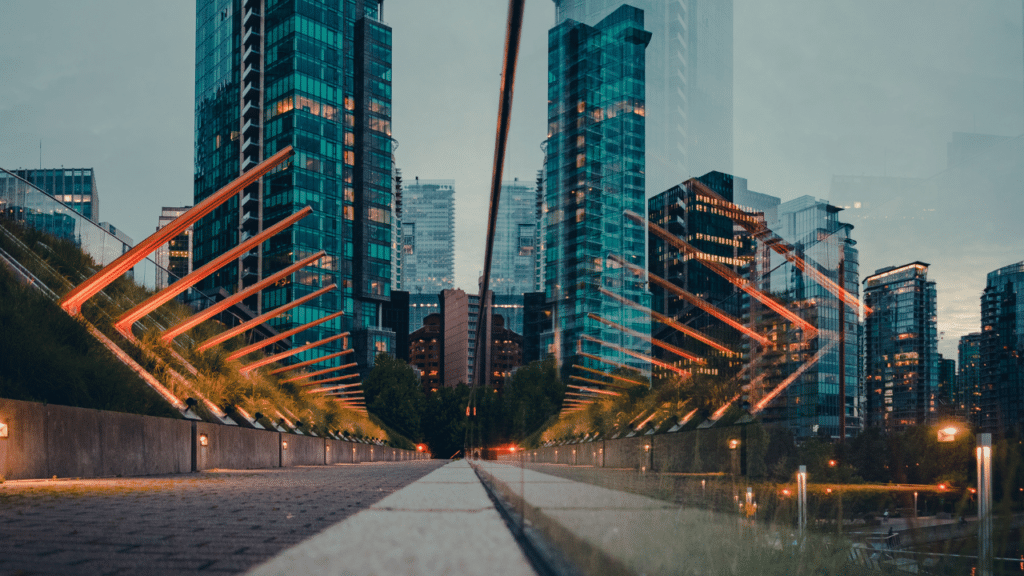
15. Get insurance
Protect your production against potential losses due to accidents or unexpected events.
16. Create talent release agreements and get them signed
Work with an attorney to create contracts for the cast to secure their participation and rights to their performance. This is also required in documentaries. To have your film broadcast, you usually need to share your talent releases with the network’s legal team. No talent releases, no screenings.
17. Organize paperwork and documents
Ensure all necessary forms, contracts, and paperwork are prepared and filed. Have duplicates.
18. Hire the rest of your crew
Recruit the remaining production team members, such as grips, gaffers, the AD, camera operator, focus puller, sound recordist, boom operator, etc.
19. Create a shooting schedule
Plan the order and timing of scenes you’re going to shoot.
20. Create a shot list
Design a list of shots that you need to get for each shooting day. This is done by the director, often in collaboration with the cinematographer and AD.
21. Have pre-production meetings
Gather key members to discuss and coordinate plans for the shoot.
22. Do a tech scout
Visit the location with your technical crew to plan for lighting, sound, and camera placement. If you’re going to be using a dolly, crane, or some other time-consuming piece of gear, you’ll need to figure out if it’s going to work at that location during your tech scout. Likewise, if you need generators, you’ll want to figure out placement of those at the tech scout.
23. Create a data management plan
Make sure you have a system for storing and managing all digital files created during the shoot. If you can’t have a dedicated data technician on set, work through the data management plan with the DP, AD, and Camera Operator. When working with digital files and digital media, you’re screwed if you calculate your data needs wrong. You also need to make sure you can easily create backups of your files on location. With digital data management, if you don’t have three copies, you’re asking for your data to disappear.
24. Create a lighting plan
Plan how each scene will be lit to create the desired visual effects and what lights will be required to achieve this.
25. Finalize your gear needs
Determine exactly what equipment is needed for your shoot.
26. Rent gear and buy expendables
Secure all necessary equipment, including items that will be used up, like tape or batteries. Make sure you have enough C-Fast Cards, SD cards or SSDs to make it through your shoot as well as two external hard drives to make file backups.
27. Figure out craft services
Plan the provision of food and drinks for cast and crew during the shoot. Don’t provide terrible food, as this will definitely lower morale. Find out your crew’s food sensitivities and allergies.
28. Create your call sheet
Develop a document detailing when and where each person is needed each day of the shoot. (+)

Film Production – Shooting the Damn Thing
1. Set Up
The crew arrives at the location, usually early, unloads the equipment, and prepares for the day’s shoot.
2. Scene -Blocking
The director, actors, and crew plan where everyone will stand and move during each shot. The director works with the DP to ensure the blocking and the camera moves work together. Actors repeat the blocking to ensure they can hit their marks.
3. Camera Setup
The camera is set in place according to the shot list and the cinematographer’s plan. The Key Grip works with his team to make sure the camera support equipment will correctly capture the scene.
4. Lighting Setup
The lighting crew sets up the lights to properly illuminate the scene and create the desired mood. The Gaffer will lead the electrical team to make sure everything works properly and is safely and securely organized.
5. Rehearsal
The actors run through the scene to ensure everything will work as planned.
6. Sound Check
The production sound mixer sets up their microphones and tests microphones and other equipment to ensure the audio will be clear and properly balanced. They’ll need to lav up the actors as required and ensure the boom placement works.
7. Last Looks
The makeup, hair, and costume teams do any necessary touch-ups, and the set is tidied and prepared for filming.
8. Rolling
The cameras and sound start recording. Typically this is what it might sound like on set before you start a take. FYI what people say before a take varies depending on where you are. What they do in the UK is not the same as what they do in the USA. Also, on some indie sets and docs, there won’t be a slate. With the tools for syncing audio and video today, some fast-moving low-budget docs won’t bother slating. But for narrative work, unless you’re a solo filmmaker, it’s normal to call the roll and slate.
Calling the Roll:
AD: Last looks. (Hair and make-up may do one last touch-up.)
AD: Quiet on set. Pictures up. When quiet is reached.
AD: Standby….Roll sound.
Sound Recordist: Speed. (This means the sound is rolling.)
AD: Roll camera. Camera operator: Rolling. AD: Mark it.
2AC: (With the slate.) Scene #. Take #. Mark. (Then claps the slate.)
Camera Operator: Camera set. (To indicate the camera is ready.)
AD: Action!
9. Cut
The director stops the recording when the shot is completed.
10. Reviewing the Shot
The director and sometimes key crew members review the shot to ensure it meets their standards and vision.
11. Reset
Actors, props, and cameras return to their initial positions to shoot the scene again, if necessary. AD yells, “Back to one,” to indicate that everyone should return to their starting position for the take.
12. Scene Wrap
Once a scene is successfully filmed, it’s wrapped, and preparations begin for the next scene. “That’s a wrap.”
13. Daily Wrap
The shooting day ends and equipment is stored and secured.
14. Review Dailies
The director and key crew members review the footage from that day.
15. Move to the Next Location
If the next day’s shooting is at a different location, packing up and moving all the equipment begins.
These steps will be repeated each day until all scenes in the shooting schedule are filmed. After that, the movie moves on to the post-production stage.
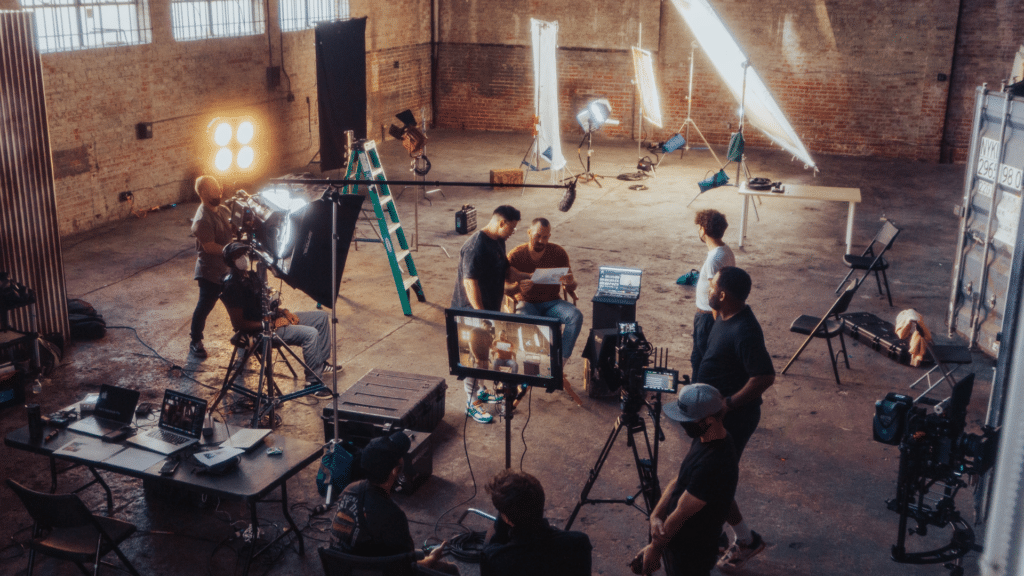
Film Production – Post Steps
This is a general guide, and the exact process will vary depending on the specifics of a film or production company.
1. Logging Footage
All of the film’s footage is cataloged and may be transcribed for easy referencing during editing. If you’re editing an indie film or a solo filmmaker, you won’t likely do this.
2. Picture Editing
The editor starts assembling the movie, scene by scene, based on the director’s vision and the storyboard (if there is one).
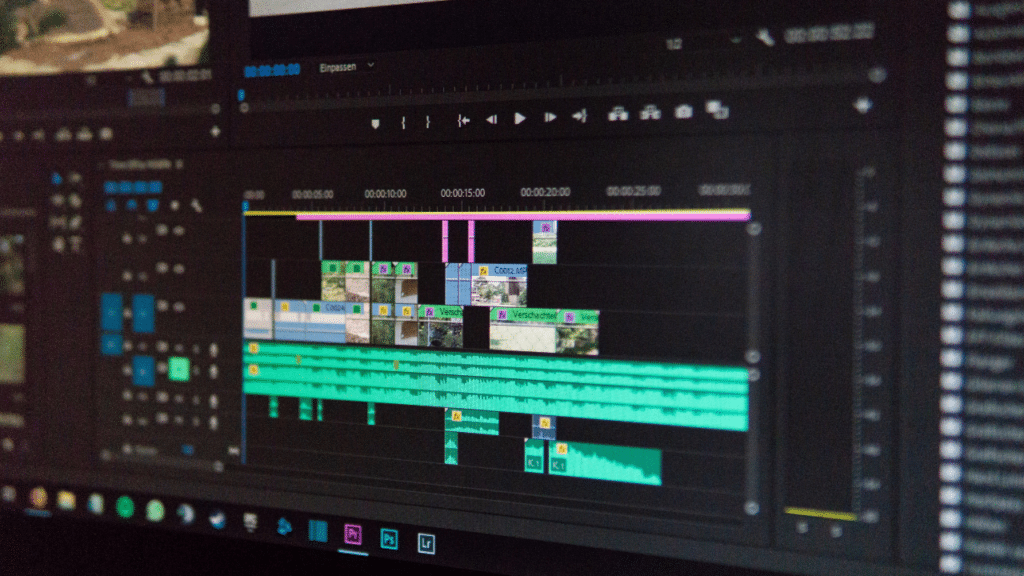
3. Rough Cut
A first cut of the film is created.
4. Fine Cut
A nearly perfect cut of the film is completed.
5. Visual Effects (VFX)
If needed, VFX artists create and integrate computer-generated imagery (CGI) into the footage.
6. Final Cut
Based on feedback from test screenings and the director’s input, final edits to the film are made.
7. Picture Lock
The final cut is locked. No more changes allowed!
8. Sound Editing and Sound Design
The sound editor works on the movie’s audio, which includes creating the sonic landscape.
9. Music Scoring
Composers and musicians create and record the film’s musical score if there’s a budget for such luxuries. If not, the sound designer puts together a score based on music that they license.

10. Sound Mixing
All of the audio elements are balanced and mixed together to create the final soundtrack.
11. Colour Grading
Colorists adjust the colour in each shot for consistency and to create the desired visual mood.
12. Titles and Credits
Text elements, including the opening titles and end credits, are created and added to the film.
13. Mastering and DCP
The finished movie is processed into its final format, ready for duplication and distribution.
14. Quality Check
The final film is screened to check for any unnoticed issues or errors that need to be fixed.
15. Distribution
Copies of the final film are made in various formats for distribution to theatres, streaming services, DVD/Blu-ray, etc.
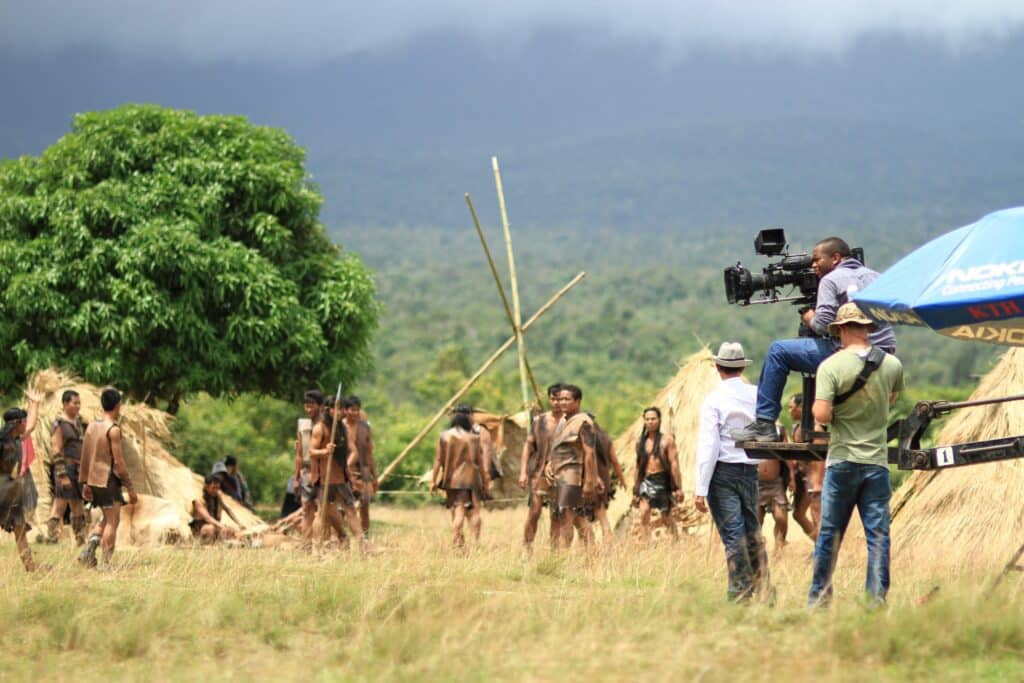
Production Team: The People Who Make the Movies
Producer:
The producer oversees all aspects of the filmmaking process, from development to distribution, ensuring everything stays on budget and on schedule. They are also typically a creative person who has a vision for how the film should be and puts together the team needed to bring their vision to life. Many producers have a strong hand in shaping a movie.
Executive Producer:
The executive producer typically handles the business and financial decisions of the production and may not be involved in day-to-day operations.
Line Producer:
The line producer manages the daily operations of a production, including hiring crew, renting equipment, and keeping the film on budget.
Director:
The director is the creative leader who shapes the film, guiding the cast and crew to fulfill their vision for the story.
First Assistant Director:
The first assistant director helps coordinate the shoot, keeping things running smoothly and on schedule.
Director of Photography or Cinematographer:
The director of photography is in charge of capturing the visual elements of the film, and managing the camera and lighting crews.
Camera Operators:
Camera operators handle the physical operation of the cameras under the direction of the cinematographer.
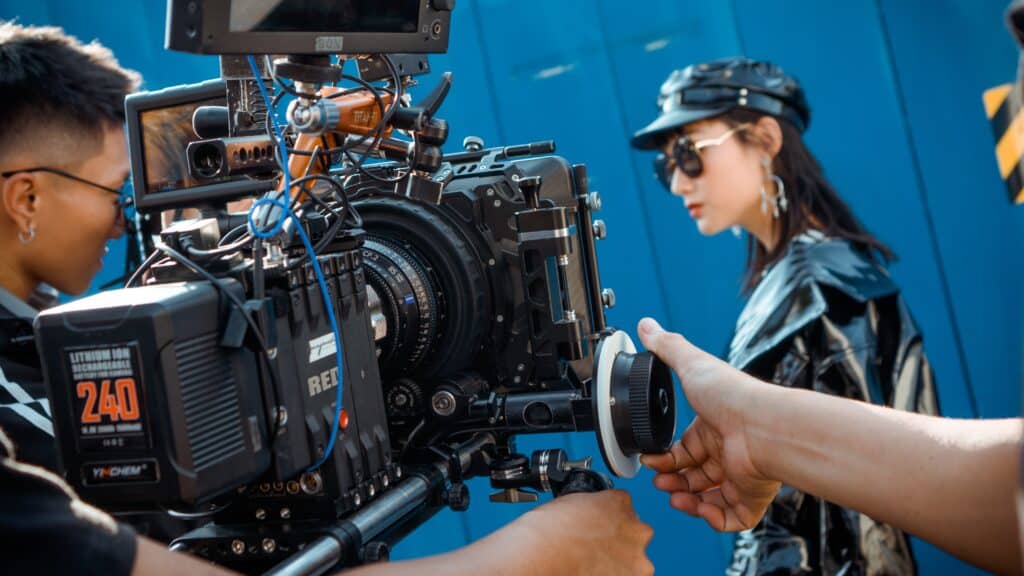
Sound Department:
The sound department deals with all aspects of the film’s audio, from recording on-set dialogue to post-production sound effects.
Sound Recordist and Boom Operator:
The sound recordist captures clean audio during filming, and the boom operator positions the microphone as close to the actors as possible without entering the shot.
Key Grip:
The key grip heads up the grip department and makes sure all the camera rigging and camera movements roll out as planned by the cinematographer and director. (+)
Grips:
The grips set up and operate all the rigging and gear that supports the camera. If there’s a dolly, crane, jib, tracks or tripod, they are the ones dealing with it. They also set up, rig and strike the lighting equipment at the direction of the cinematographer. In other words, the grips make sure everything that holds up the camera and the lights works perfectly.
Gaffer:
The Gaffer is the chief electrician and head of the electrical department. The Gaffer works directly under the DP and executes his or her vision. The gaffer has to know how all the lighting gear works and is a good manager. (+) (+)
Best Boy Electric:
This is the senior electrician on set, coming second to the Gaffer. (+)
Production Designer and Set Designer:
The production designer oversees the visual look of the film, and the set designer creates the physical environment where filming takes place.
Makeup and Wardrobe:
Makeup and wardrobe teams are responsible for the design, creation, and management of wardrobe and makeup to bring to life the characters accurately and consistently.
Editor and Editing Assistants:
The editor puts together the final film from the available footage and sound. They are aided by editing assistants who manage and organize all the footage. They are usually working with the director to create the final cut.
DITs (Digital Imaging Technicians):
DITs manage and maintain the integrity of the digital data, ensuring it’s properly backed up and stored.
Colorists:
Colorists work in post-production to correct any colour issues and create the final look of the film.
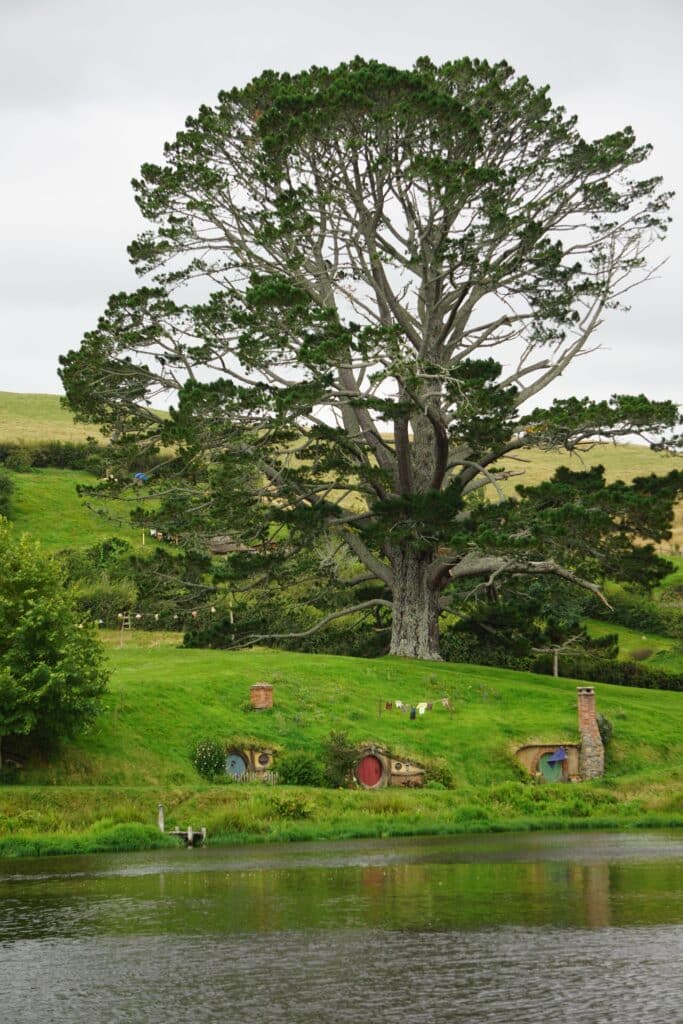
Filmmaking Pre-Production and Production Software and Apps
Final Draft
Scriptwriting software used widely in the film industry. >
Celtx
A cloud-based tool for scriptwriting and pre-production planning. >
StudioBinder
A comprehensive pre-production suite with tools for scheduling, storyboarding, budgeting, making call sheets, and more. >
Movie Magic Scheduling
This software is widely used for scheduling and planning shoots. >
Movie Magic Budgeting
This tool is used for budgeting films. >
Shot Designer
A tool for planning shots and movement on set. >
Shot Lister App
Build, organize, and share shot lists and shooting schedules. >
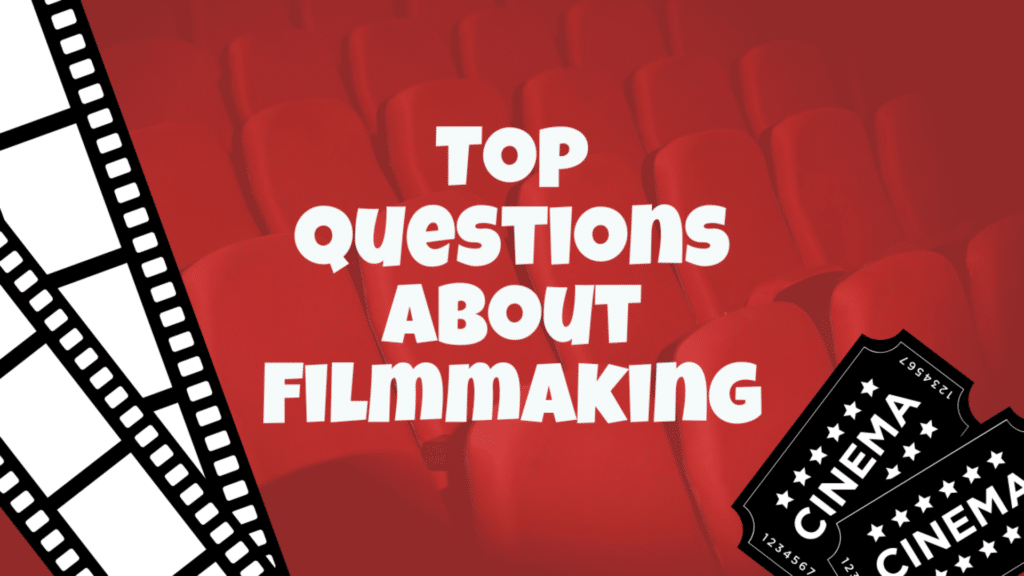
Top Questions about Filmmaking
Is it filmmaking or film making?
The correct spelling is filmmaking.
What degree do you need for filmmaking?
You don’t need a degree to make films. You need to be a good storyteller, have management skills, and be able to communicate a creative vision and bring it to completion. Above all else, to be a filmmaker, you need persistence.
What does production mean in film?
Production typically refers to the stage in making a film where you’re on set shooting the footage. However, someone may use the phrase production to refer to the pre-production stage, where you’re planning the production and putting together the team and financing.
More Articles and Guides About Filmmaking
⭐ 17 Filmmaking Mistakes that Make Low-Budget Movies Look Cheap
⭐ 14 Filmmaking Techniques that’ll Make Your Zero Budget Movies Look “Cinematic”
⭐ Story Circle: 8-Step Storytelling Guide Based on the Hero’s Journey
Learn Filmmaking and Get the Gear Guide
If you’re interested in learning filmmaking, check out the Solo Filmmaking Mentorship Program I created for aspiring filmmakers and video creators. It usually goes live once per year. So I recommend getting the Story Envelope Filmmaking letter which comes out a couple of times per month. That way, you can get filmmaking tips for free and find out when the filmmaking course is going live again.
Also, before you go, grab the Solo Filmmaking Gear Guide and Checklist for Beginners.

About the Author
Hi! I’m Colette Nichol. I’m a solo filmmaker and story strategist based out of rainy Vancouver, Canada. I’ve been making videos and micro films for small businesses and global brands since 2014.
Plus, I LOVE to help aspiring filmmakers pursue their dreams and start making films. This blog is designed to help you gain the knowledge you need to become a filmmaker.
If you want more, get on the waitlist for the Story Envelope Academy Solo Filmmaking Mentorship Program. It opens up one time per year and is the best way to become a filmmaking or video pro fast!
CLICK HERE to get on the solo filmmaking mentorship waitlist.